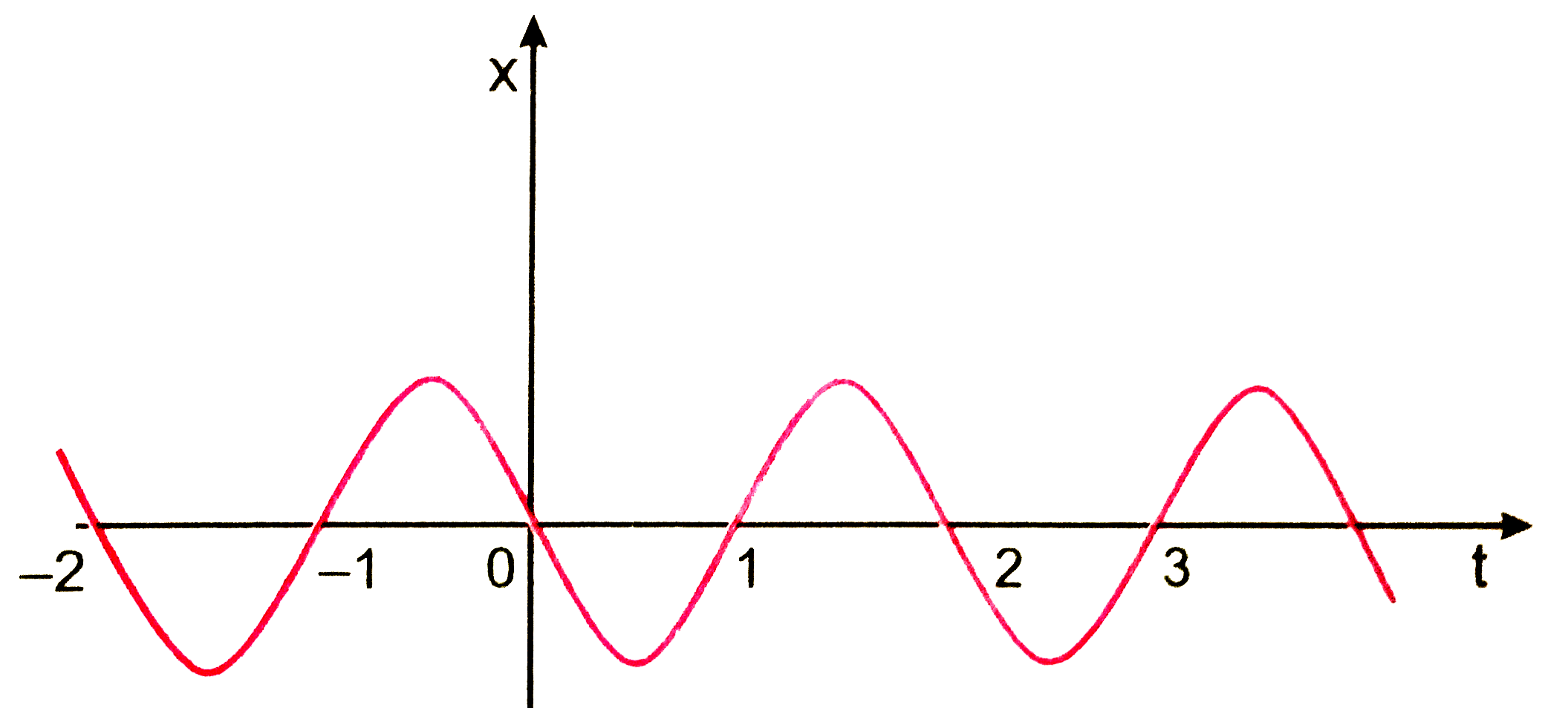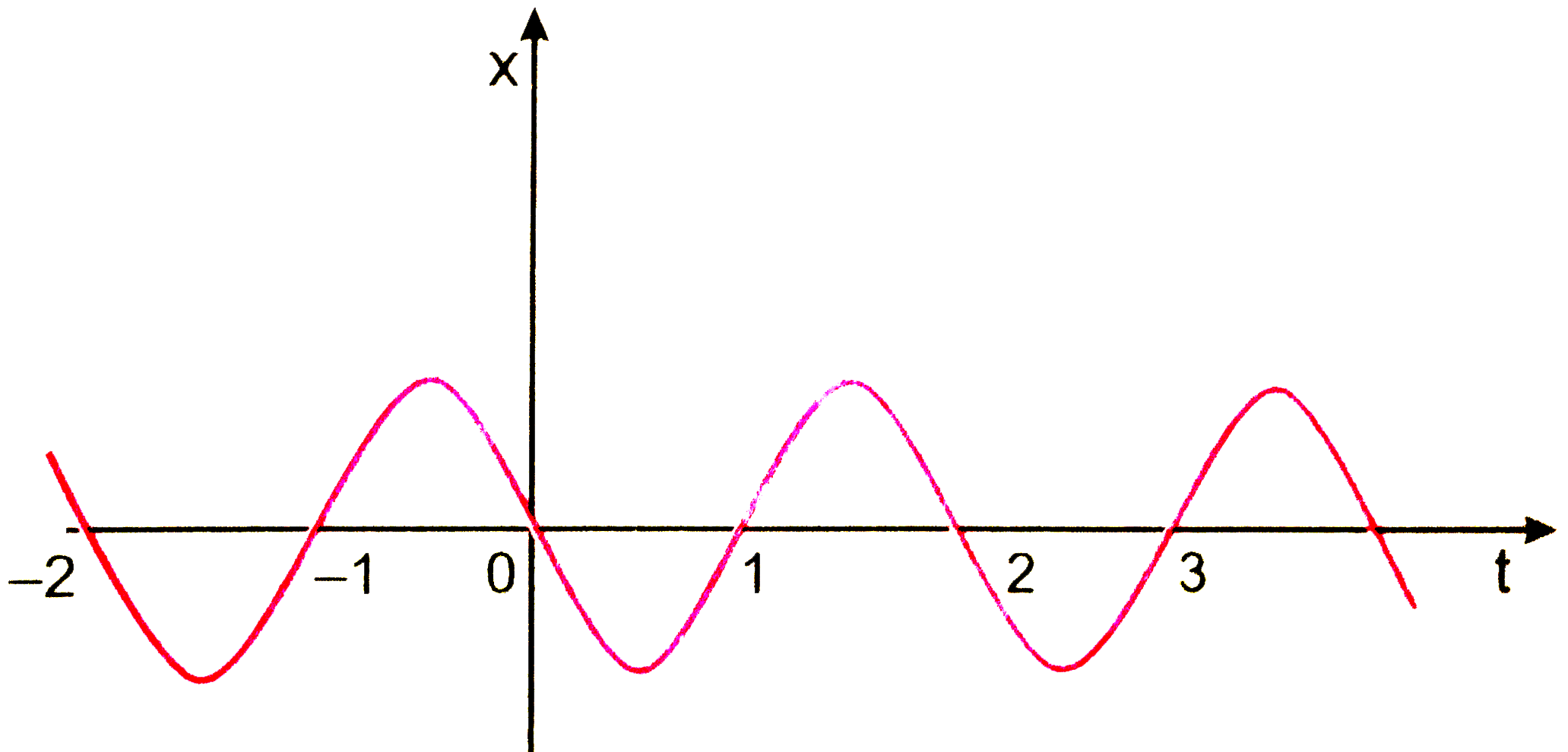The velocity - time graph of a particle in one dimensional motion is shown in figure.

Which of the following formulae are correct for describing the motion of the particle over the time- interval t1 to t2 :
(a) x(t2)=x(t1)+v(t2−t1)+(12)a(t2−t1)2
(b) v(t2)=v(t1)+a(t1))/(t2−t1)
(C) vaverage=(x(t2)−x(t1))/(t2−t1)
(d) aaverage=(v(t2)−v(t1))/(t2−t1)
(e) x(t2)=x(t1)+vaverage(t2−t1)+(12)aaverage(t2−t1)2
(f)c(t2)−c(t1)= area under the v-t curve bonunded by the t -axis and the dotted line shown. Solution in Gujrati
Slope of graph is not constant during t1 to t2 and not uniform, it means acceleration is not uniform. Hence, (a), (b) and (e) are not correct. Because these are for uniformly accelerated motion. But equations (c), (d) and (f) are correct because these equations are for regular and irregular acceleration (both).
Topper's Solved these Questions
- BOOK - KUMAR PRAKASHANCHAPTER - MOTION IN A STRAIGHT LINE EXERCISE - SECTION-C43videos
MOTION IN A STRAIGHT LINE
- BOOK - KUMAR PRAKASHANCHAPTER - MOTION IN A STRAIGHT LINE EXERCISE - SECTION-D26videos
MOTION IN A STRAIGHT LINE
- BOOK - KUMAR PRAKASHANCHAPTER - MOTION IN A STRAIGHT LINE EXERCISE - SECTION-A TRY YOUR SELF (VSQs)52videos
MOTION IN A STRAIGHT LINE
- BOOK - KUMAR PRAKASHANCHAPTER - MECHANICAL PROPERTIES OF FLUIDS EXERCISE - QUESTION PAPER (SECTION -C)3videos
MECHANICAL PROPERTIES OF FLUIDS
- BOOK - KUMAR PRAKASHANCHAPTER - OBJECTIVE QUESTIONS AS PER NEW PAPER STYLE EXERCISE - CHAPTER - 8 (Match Type questions)5videos
OBJECTIVE QUESTIONS AS PER NEW PAPER STYLE
Similar Questions
What is acceleration ? What is the direction ? Also gives its unit.
01:09View SolutionAmong the four graph shown in the figure there is only one graph for which average velocity over the time interval (O,T) can vanish for a suitably chosen T. Which one is it ?
03:02View SolutionHow can we determine whether the object is in rest or not?
03:57View SolutionGlycerine flows steadily through a horizontal tube of length 1.5m and radius 1.0 cm . If the amount of glycerine collected per second at one is 4.0×10−3kgs−1 , what is the pressure difference between the two ends of the tube ? (Density of glycerine =1.3×10103kgm−3 and viscosity of glycerine =0.83 Pa s). [ you may also like to check if the assumption of laminar flow in the tube is correct]
02:12View SolutionType of satellites are given in Column-I and their uses are given in Column-II. Match them properly :
Column-IColumn-II(1) Polar satellite(a) Tele communication(2) Geo-stationary satellite(b) Investigation(c) For information about atmosphere02:19View SolutionA body is initially at rest. It undergoes one-dimensional motion with constant acceleration. The power delivered to it at time t is proportional to (i) t^(1//2) (ii) t (iii) t^(3//2) (iv) t^(2)
17:10View SolutionThe displacement x of a particle in a straight line motion is given by x=1−t−t2. The correct representation of the motion is
07:37View SolutionIf x=1−t21+t2 and y=2t1+t2, then: dydx∣∣∣t=1 is
03:13View Solutionचित्र 3.54 में किसी कण की एकविमीय सरल आवर्ती गति के लिए x−t ग्राफ दिखाया गया है (इस गति के बारे में आप अध्याय 14 में पढ़ेंगे) समय t=1⋅2 सेकण्ड पर कण के स्थिति वेग व त्वरण के चिन्ह क्या होंगे ?
 03:15View Solution
03:15View Solutionचित्र 3.54 में किसी कण की एकविमीय सरल आवर्ती गति के लिए x−t ग्राफ दिखाया गया है (इस गति के बारे में आप अध्याय 14 में पढ़ेंगे) समय t=−1⋅2 सेकण्ड पर कण के स्थिति वेग व त्वरण के चिन्ह क्या होंगे ?
 03:25View Solution
03:25View Solutionद्विविमीय गति कर रहे एक कण के लिए समय t पर कार्तीय निर्देश तंत्र में निर्देशांक (x,y) निम्न प्रकार हैं
x=2+t3 मी. तथा y=t−(t34) मी0 समय अंतराल t=0 से t=2 सेकण्ड में कण का विस्थापन और औसत वेग क्या होंगें? समय t=2 सेकण्ड पर कण के तात्क्षणिक वेग और तात्क्षणिक त्वरण ज्ञात कीजिए। समय t=2 सेकण्ड पर स्थिति सदिश →r, तात्क्षणिक वेग →v और तात्क्षणिक त्वरण की दिशायें चित्रित करो।04:12View SolutionIf x=1−t21+t2andy=2t1+t2 then dydx at t=2………….
03:01View SolutionA body is initially at rest. It undergoes one-dimensional motion with constant acceleration. The power delivered to it at time t is proportional to (i) t^(1//2) (ii) t (iii) t^(3//2) (iv) t^(2)
View SolutionA particle moves a distance x in time t according to equation x^(2) = 1 + t^(2) . The acceleration of the particle is
03:02View SolutionThe displacement x of a particle in a straight line motion is given by x=1−t−t2. The correct representation of the motion is
View Solution

